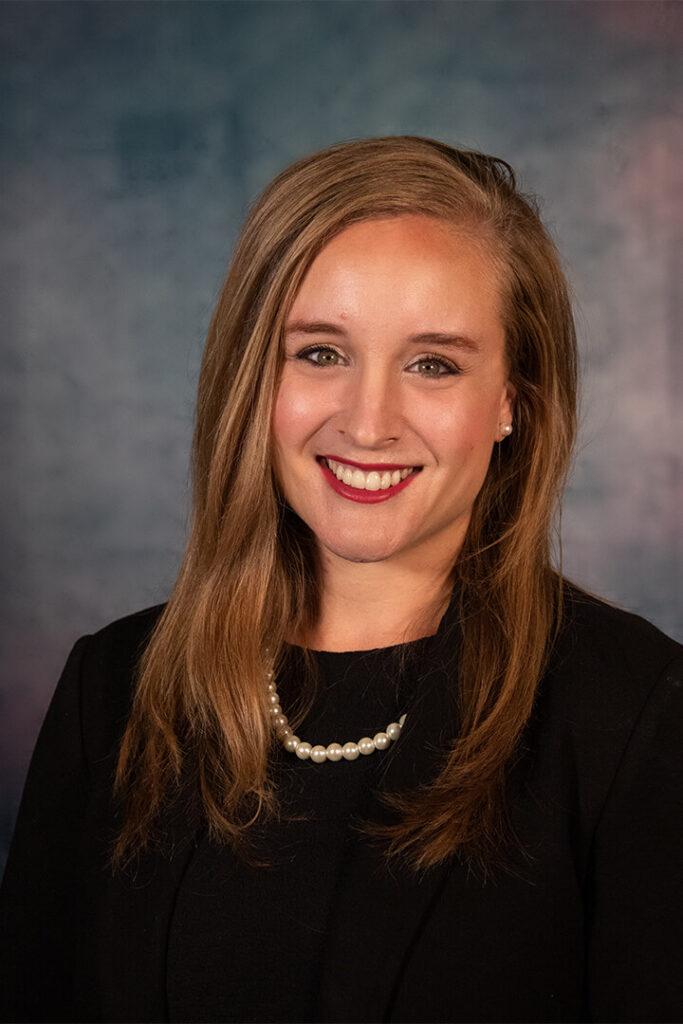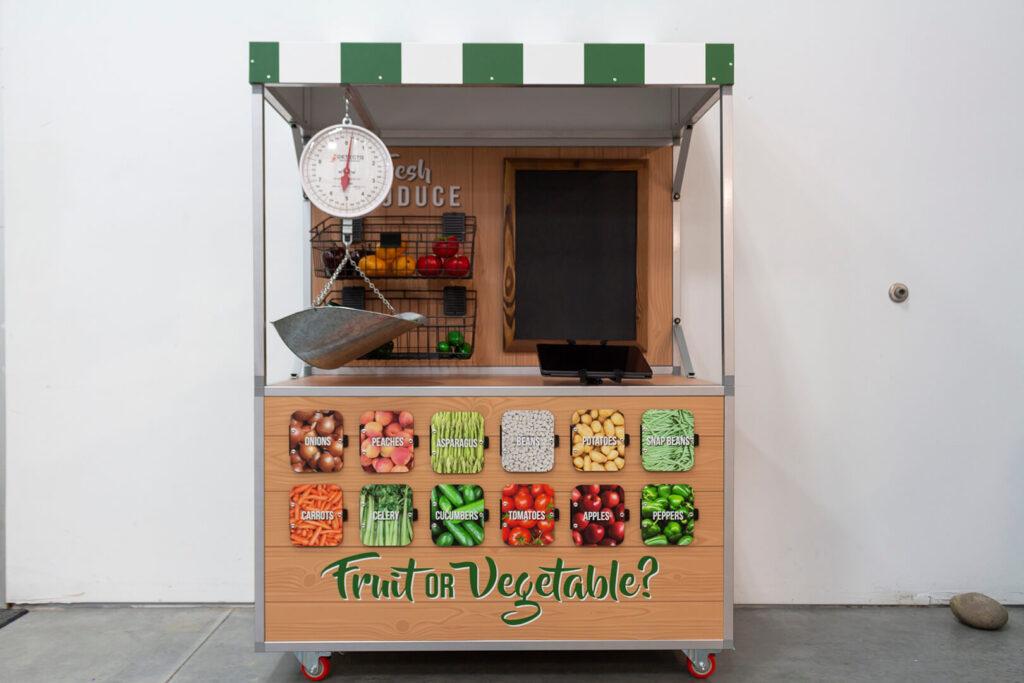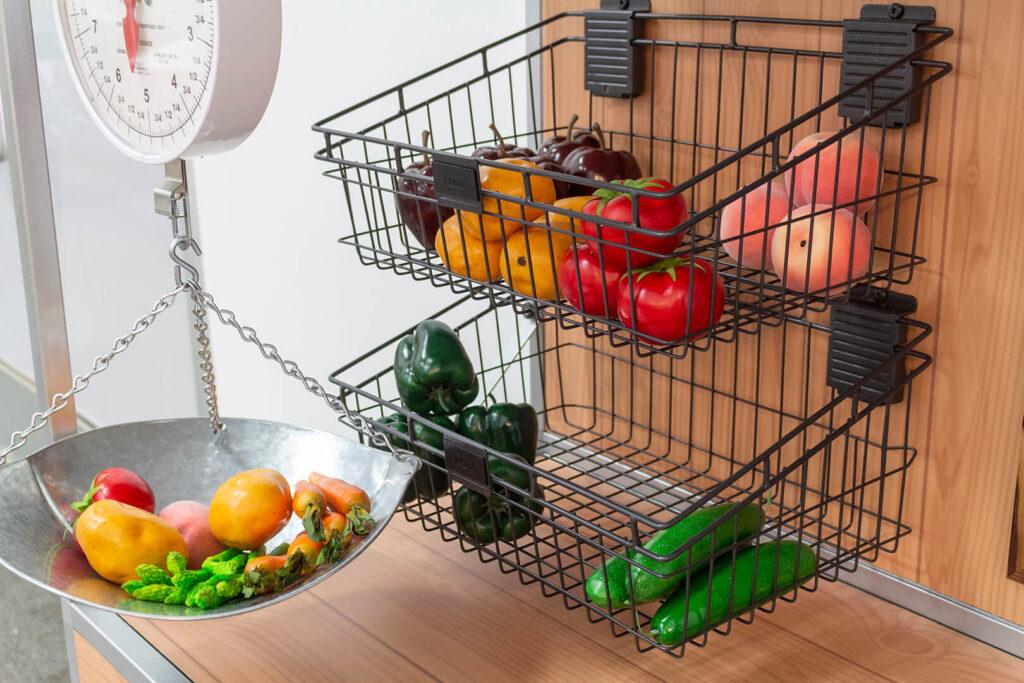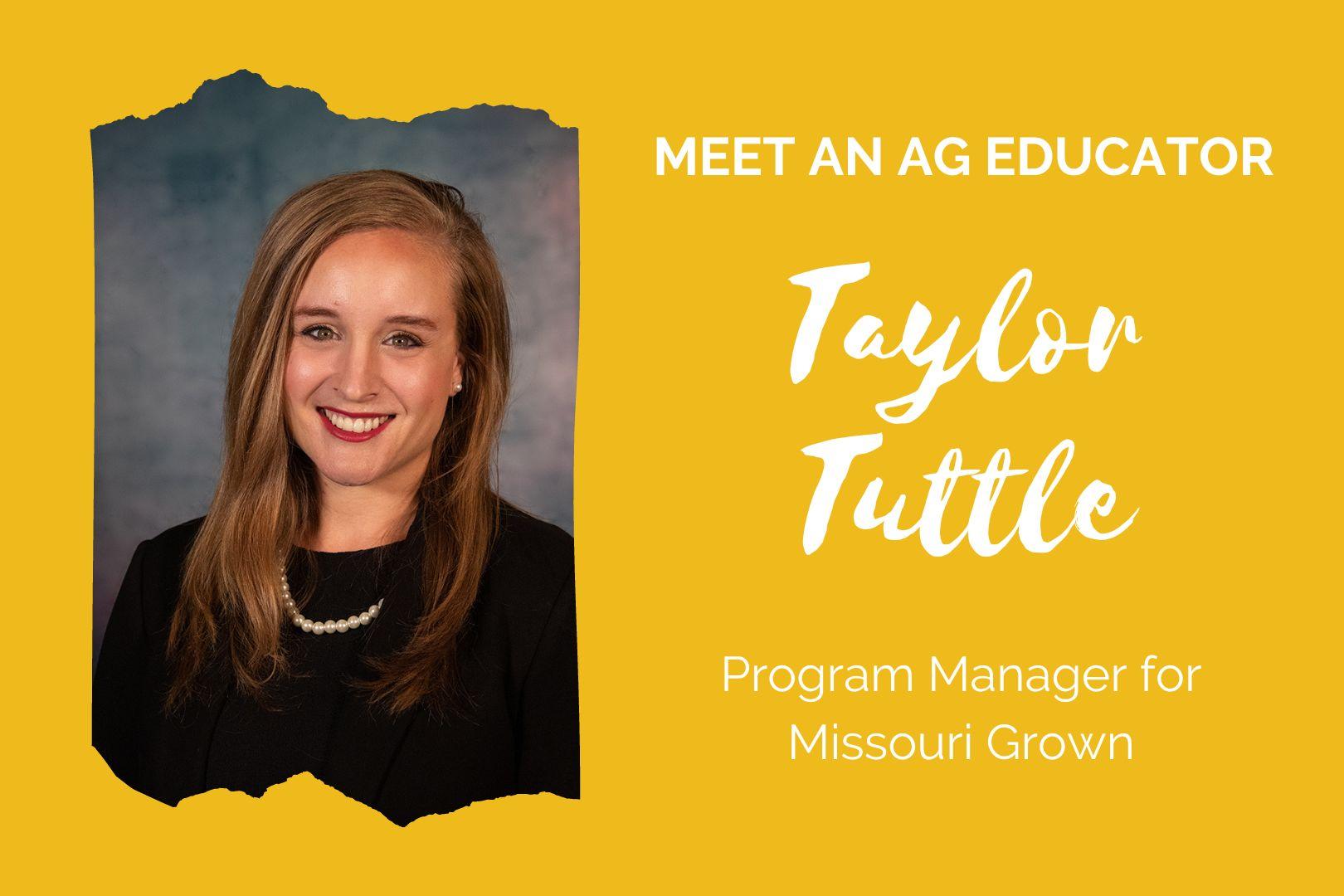
When we think of ag educators, it’s easy to think first of the people who work for farmer organizations. Checkoffs, farm bureau chapters, and so on. Or maybe you picture a high school ag teacher. This month’s guest used to work as a teacher, but she found a better outlet for her passions through her state government.
Missouri’s Department of Agriculture runs a program called Missouri Grown to promote locally-grown food. And this month, we talked with Taylor Tuttle, who directs Missouri Grown. She shared her journey with ag education, and what she loves about working with Missouri Grown. Plus, she explains all about their brand-new, kid-friendly exhibit that made a splash at the Missouri State Fair this year. (We lightly edited and condensed this interview.)
Exhibit Farm: So what does your day-to-day work involve?
Taylor Tuttle: There’s not really a typical day, it just depends on the season that we’re in. The Missouri Grown program has basically five key areas that we focus on: membership, farm-to-table, agritourism, marketing, and communications. And then we have an education outreach component as well.
A lot falls under our umbrella. But really at the core of what we do is connecting producers to consumers and consumers to agriculture.
EF: So what are you hoping consumers take away from that?
TT: Well, as I mentioned, [our] focus is being that connector between producers to consumers and consumers to agriculture. Our goal is to share the story of agriculture, share the story of Missouri farmers and ranchers, and help consumers understand where their food comes from, who are the folks who are providing that food.
EF: What’s your process for finding producers to work with?
TT: Yeah, so one of the components of our program is membership. Our program is members who are farmers and ranchers. We have folks who have jams and jellies; we have specialty crop producers, you know, apple orchards and pumpkin patches. We also have folks who raise cattle or pigs and make meat sticks. It really is representative of how diverse Missouri agriculture is.
So our membership is continually growing. It seems like every week we’re adding new members, which is great. We want to support those farmers and ranchers by providing resources and other marketing support, but also connecting them with consumers and connecting those consumers to Missouri agricultural products.
Because again, Missouri agriculture is just so diverse. We have rice, and cotton, and peanuts in the Bootheel, and we have more traditional crops like corn and soybeans, and we have cattle and hogs. We have so much to offer consumers. And this program really provides an opportunity for producers and consumers to connect.
EF: With the play farmers market, how do you plan to use it? Will you take it to real farmers markets with you?
TT: We actually have several pieces that have been designed by Exhibit Farm. Several years ago, we ordered the Modern Farm Worker. That’s been great to take along with us to the Missouri State Fair and other exhibits, trade shows, or events we go to.

And then we had Exhibit Farm design and build an interactive display that has a state map and has different videos from farmers and ranchers across the state. Then it also has a timeline of the role that agriculture has played in Missouri’s history as well. That was designed specifically for the 2019 Missouri State Fair.
And then this past year, we worked with Exhibit Farm on our Farmers Market Display, which turned out really great. We’re really thrilled to have it. We used it at the 2022 Missouri State Fair, [as part of AgVenture,] the educational exhibit we have in the ag building.
So, with the farmers market display, folks who visited had the chance to do a little trivia and learn about some of the specialty crops we grow in our state. Then there’s a spot for an iPad so we could have our interactive farmers market map available to visitors, so they could find a farmers market near them. And then of course there was the scale and the life-size produce. That was really fun for visitors. They could weigh their produce and figure out what it costs for a pound of apples, or half a pound of carrots, or whatever they put in the scale.
It was a great exhibit; folks really liked it. It was designed with kids in mind: it’s their size and interactive and very hands-on, so it’s been a really successful piece for us.
And we do have plans to take it with us on the road to some other events. We have the Fall Harvest Festival coming up at the end of this month here in Jefferson City, so we’ll take it with us there. And there are other opportunities throughout the year that we’ll have the chance to take it on the road again.
EF: Lastly, how did you wind up in ag education?
TT: Agriculture’s been a part of my life since the day I was born. I was born and raised in an ag family; we raised turkeys and cattle on my family farm. So agriculture’s always been a passion of mine, but over the years that passion grew as I was exposed to more opportunities in agriculture, like FFA. I had a really great experience in FFA, grew both personally and professionally, and just realized how much I enjoyed helping share the story of agriculture.
So when I graduated from high school, I majored in agricultural education at the University of Missouri. I did have a teaching certificate, but as much as I loved teaching and [helping] students grow in their passions and skills, I really loved being able to connect with folks who didn’t come from the same walk of life that I did.
Because at the end of the day, you know, farmers and ranchers are really passionate about what we do, but the consumer is at the heart of what we do. We’re raising and growing those products to provide food, fuel, and fiber for a growing world, so it’s important to make that connection. And I know farmers and ranchers are really busy on the farm, so to help make those connections and help support farmers and ranchers and also consumers, it’s just really rewarding.

